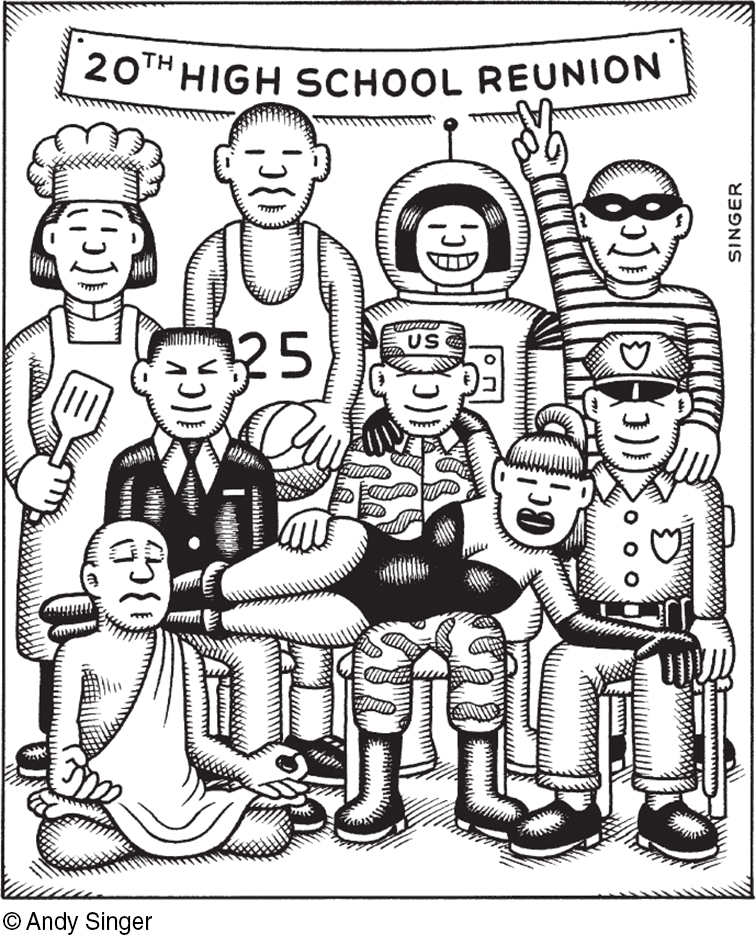Module 12. Adolescence
12-1 How is adolescence defined, and how do physical changes affect developing teens?
adolescence the transition period from childhood to adulthood, extending from puberty to independence.

At a five-year high school reunion, former best friends may be surprised at their divergence; a decade later, they may have trouble sustaining a conversation.
© Andy Singer
Many psychologists once believed that childhood sets our traits. Today’s developmental psychologists see development as lifelong. As this life-span perspective emerged, psychologists began to look at how maturation and experience shape us not only in infancy and childhood, but also in adolescence and beyond. Adolescence—the years spent morphing from child to adult—starts with the physical beginnings of sexual maturity and ends with the social achievement of independent adult status. In some cultures, where teens are self-supporting, this means that adolescence hardly exists.
How will you look back on your life 10 years from now? Are you making choices that someday you will recollect with satisfaction?
G. Stanley Hall (1904), one of the first psychologists to describe adolescence, believed that the tension between biological maturity and social dependence creates a period of “storm and stress.” Indeed, after age 30, many who grow up in independence-fostering Western cultures look back on their teenage years as a time they would not want to relive, a time when their peers’ social approval was imperative, their sense of direction in life was in flux, and their feeling of alienation from their parents was deepest (Arnett, 1999; Macfarlane, 1964).
But for many, adolescence is a time of vitality without the cares of adulthood, a time of rewarding friendships, heightened idealism, and a growing sense of life’s exciting possibilities.
